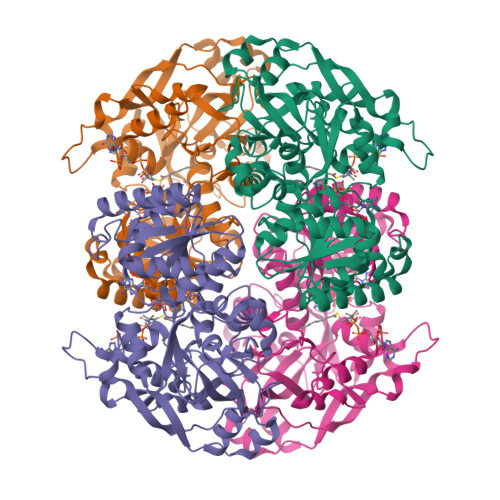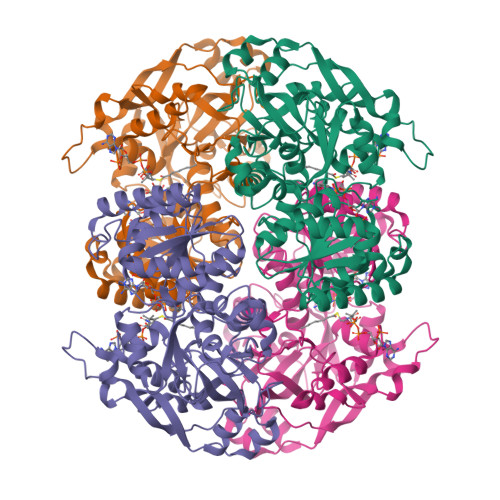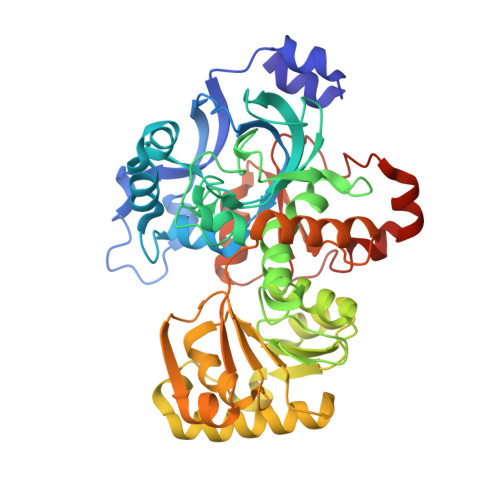Unusual carbon fixation gives rise to diverse polyketide extender units.
Quade, N., Huo, L., Rachid, S., Heinz, D.W., Muller, R.(2011) Nat Chem Biol 8: 117-124
- PubMed: 22138621
- DOI: https://doi.org/10.1038/nchembio.734
- Primary Citation of Related Structures:
4A0S, 4A10 - PubMed Abstract:
Polyketides are structurally diverse and medically important natural products that have various biological activities. During biosynthesis, chain elongation uses activated dicarboxylic acid building blocks, and their availability therefore limits side chain variation in polyketides. Recently, the crotonyl-CoA carboxylase-reductase (CCR) class of enzymes was identified in primary metabolism and was found to be involved in extender-unit biosynthesis of polyketides. These enzymes are, in theory, capable of forming dicarboxylic acids that show any side chain from the respective unsaturated fatty acid precursor. To our knowledge, we here report the first crystal structure of a CCR, the hexylmalonyl-CoA synthase from Streptomyces sp. JS360, in complex with its substrate. Structural analysis and biochemical characterization of the enzyme, including active site mutations, are reported. Our analysis reveals how primary metabolic CCRs can evolve to produce various dicarboxylic acid building blocks, setting the stage to use CCRs for the production of unique extender units and, consequently, altered polyketides.
Organizational Affiliation:
Department of Molecular Structural Biology, Helmholtz Centre for Infection Research, Braunschweig, Germany.


















